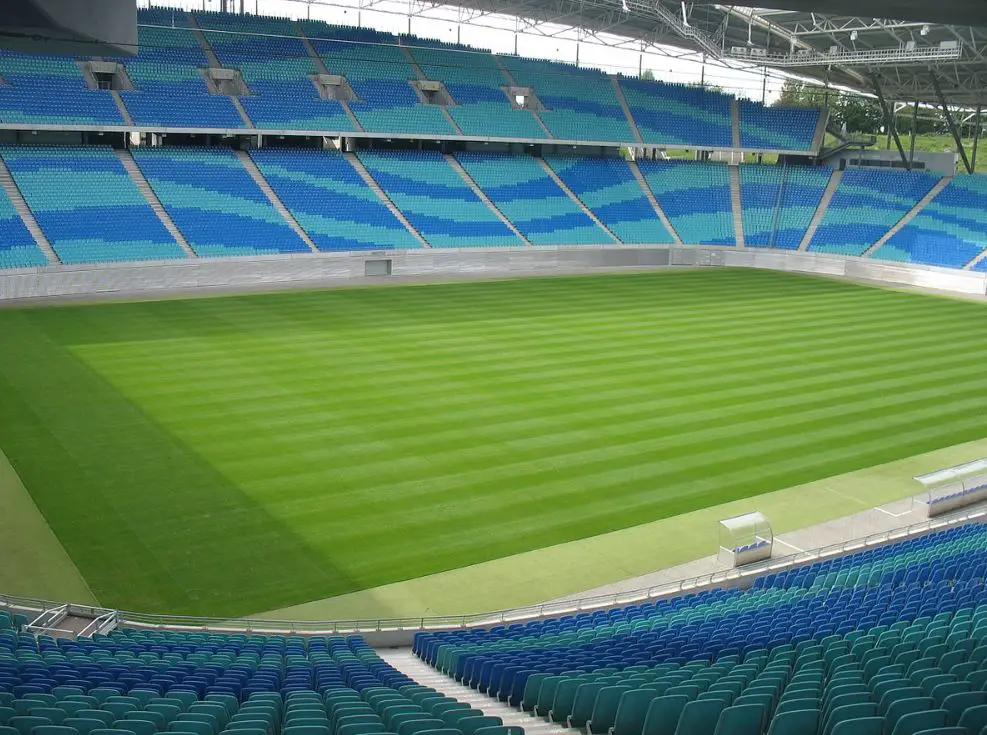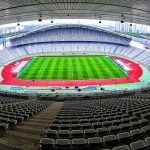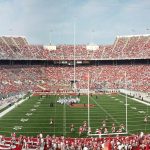Just like the FIFA World Cup, the UEFA European European Football Championship, or UEFA EURO 2024 as its commonly referred to, is held once every 4 years.
In 2023, Germany will host this event, a country where you can find some of the most amazing stadiums in Europe.
Granted, this list of venues looks very similar to the list of the biggest stadiums in Germany, except for a few arenas that have been left out.
The capacity of several stadiums is less for international games than for domestic games, so this also shakes up the rankings a bit.
Below, you can find a list of the Euro 2024 Stadiums, the official venues of this highly anticipated event in the world of association football.
1. Olympiastadion
- Location: Berlin
- Capacity: 74,461
The Olympiastadion is the biggest stadium in Germany by capacity for international games and is the centerpiece of the Olympiapark in the western part of the German capital.
The stadium was constructed between 1934 and 1936 to serve as the main venue of the 1936 Summer Olympics which were held in berlin that year.
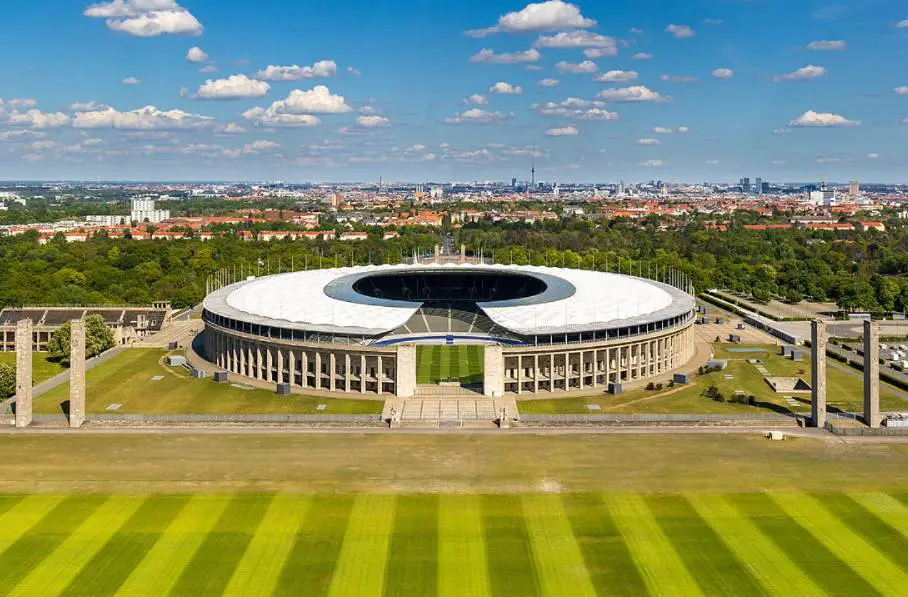
The stadium was heavily renovated in the early 21st century and has had a permanent seating capacity of 74,461 ever since.
It’s likely that the final game will be played at this magnificent venue which is ranked as a UEFA category four stadium.
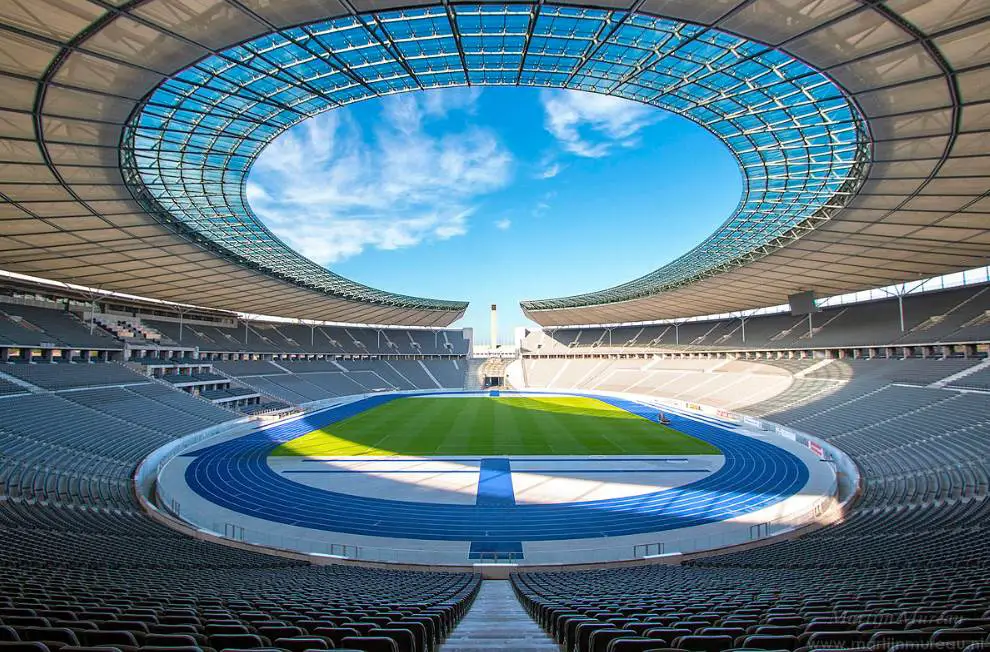
2. Allianz Arena
- Location: Munich
- Capacity: 70,076
The Allianz Arena is the magnificent home stadium of FC Bayern Munchen, the most successful football club in German history.
The exterior of the stadium is covered with plastic panels which can be illuminated at night. It was the first stadium in the world to have this feature upon completion in 2005.
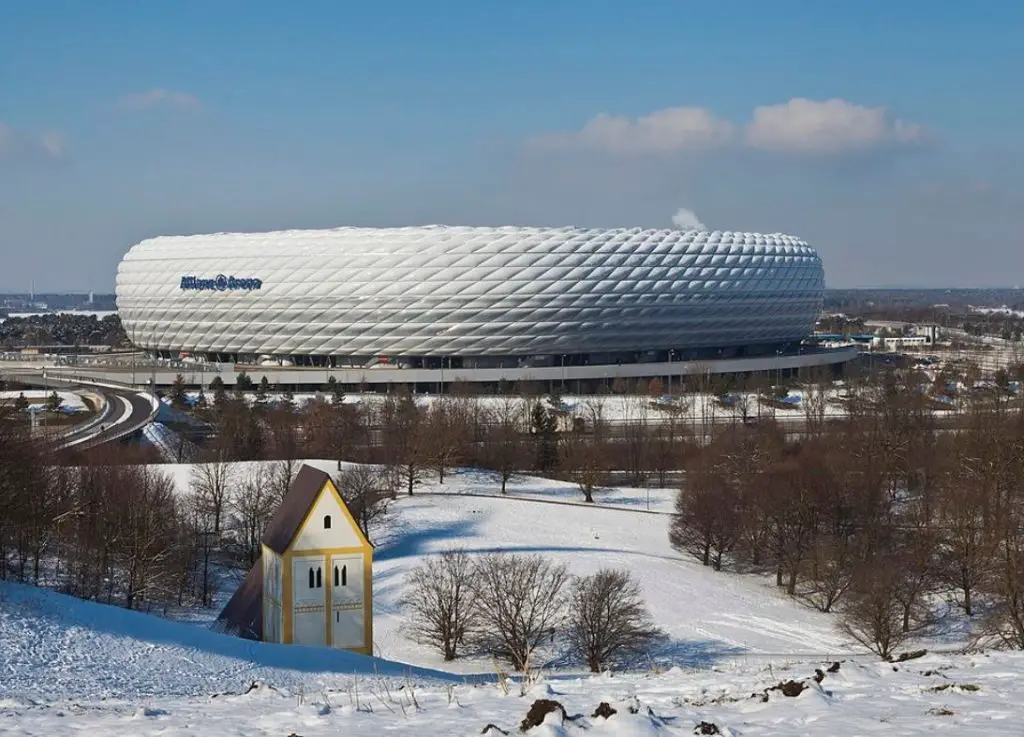
The interior of the stadium has been changed a number of times over the years as the stadium was expanded twice following its completion.
It was originally the home of neighbors TSV 1860 Munich as well, but the configuration was changed following the so-called “Bayernization” in 2018.

3. Westfalenstadion
- Location: Dortmund
- Capacity: 65,849
The Westfalenstadion is the largest stadium in Germany for domestic games because of the world-famous “Yellow Wall,” a large stand behind the goal full of Dortmund fans.
This will be transformed into an all-seater during the Euro 2024 tournament and this significantly reduces the capacity of the stadium to 65,849 seats.
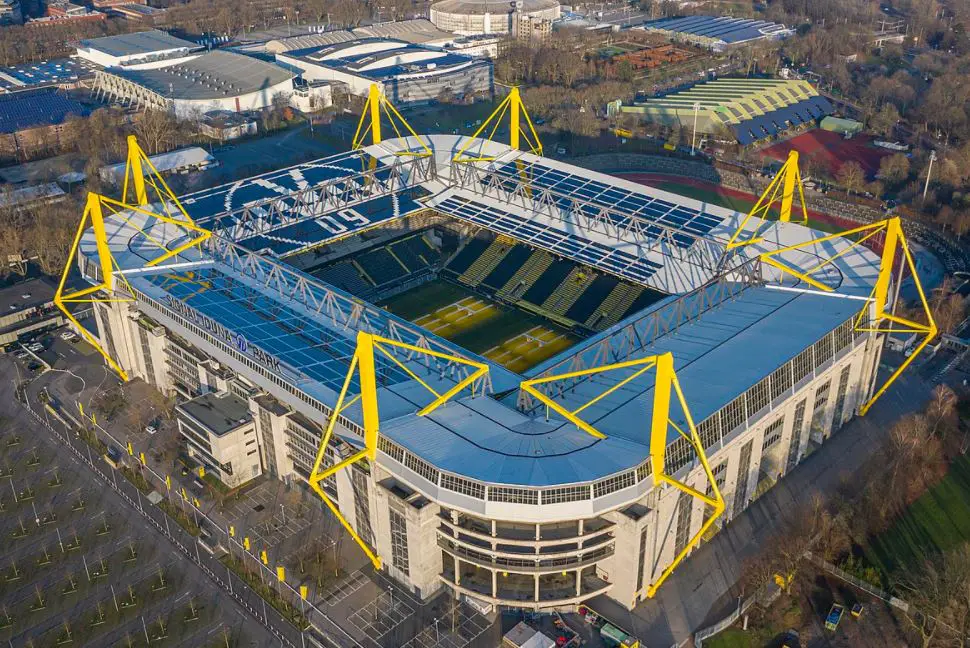
The interior of the stadium is pretty imposing because the stands are located very close to the playing field. This provides an amazing experience during games.
The stadium is officially known as Signal Iduna Park and is renamed to BVB Stadion Dortmund during UEFA competitions.
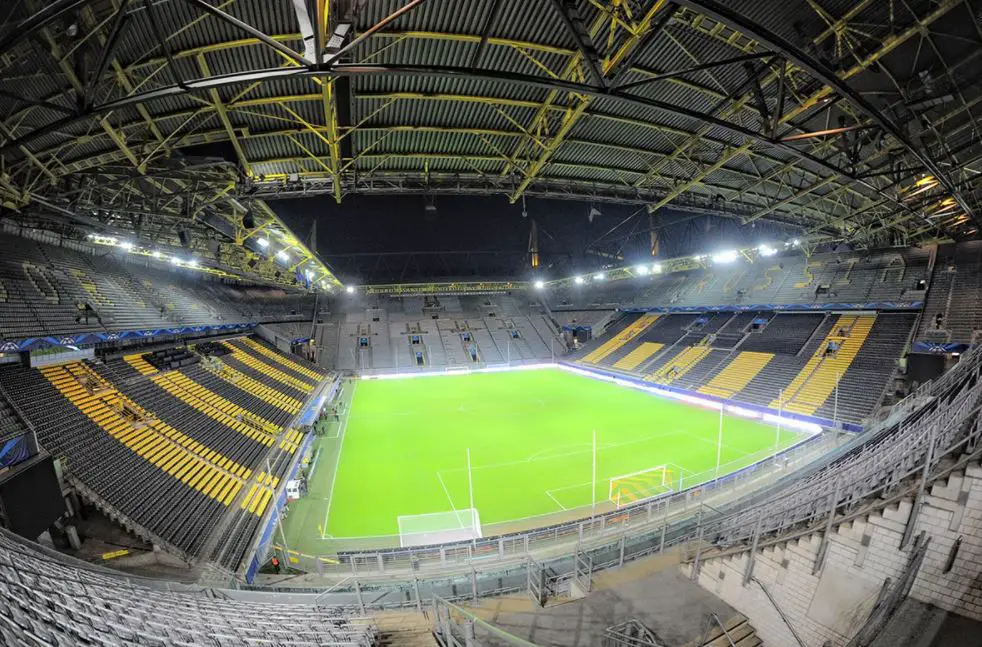
4. Arena AufSchalke
- Location: Gelsenkirchen
- Capacity: 54,740
Arena AufSchalke is officially known as the Veltins-Arena, a reference to the German brewery that bought the naming rights back in 2005.
It’s the home of one of the most popular football clubs in Germany, FC Schalke 04, a club with a fanbase that exceeds 160,000 members.
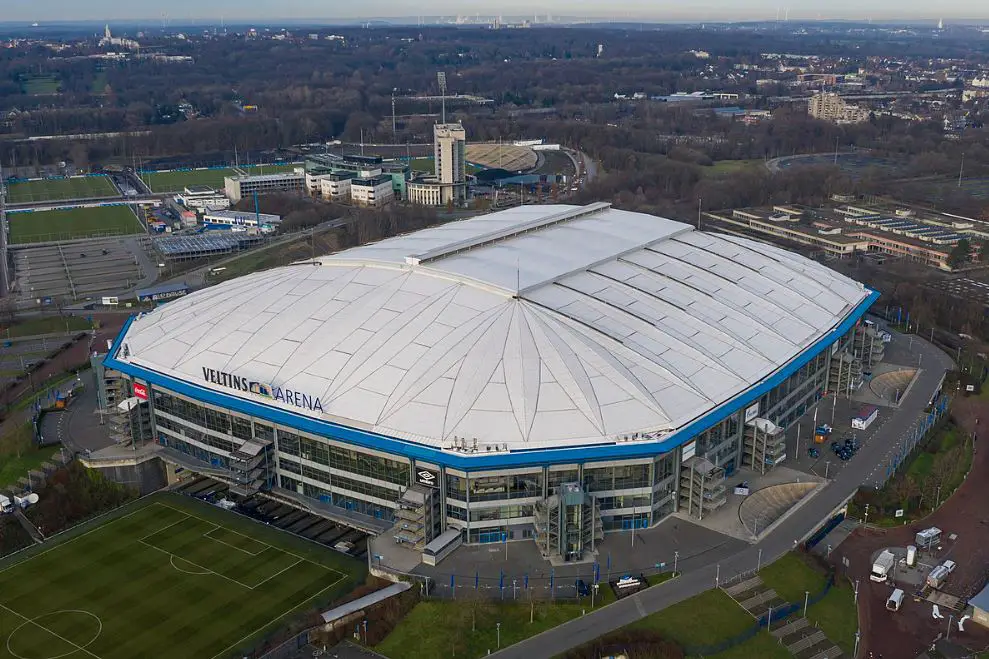
The stadium not only features a retractable roof but also has a retractable pitch. This way the grass can benefit from optimal weather conditions outside of the stadium.
Another remarkable feature is the large scoreboard that hangs above the playing field. This was the first of its kind in a football stadium when the arena opened its doors in 2001.
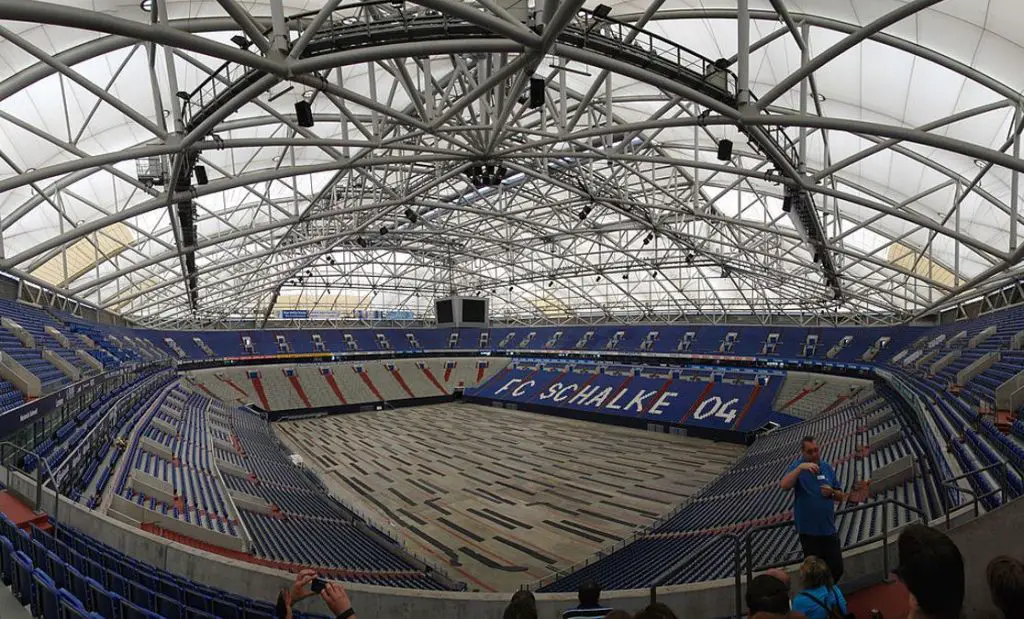
5. Waldstadion
- Location: Frankfurt
- Capacity: 54,697
The Waldstadion is the common name of another stadium with a retractable roof in Frankfurt that is officially known as the “Deutsche Bank Park.”
It has been the home of Eintracht Frankfurt ever since it first opened its doors in 1925. It has changed quite a bit since it was completed in the 1920s.
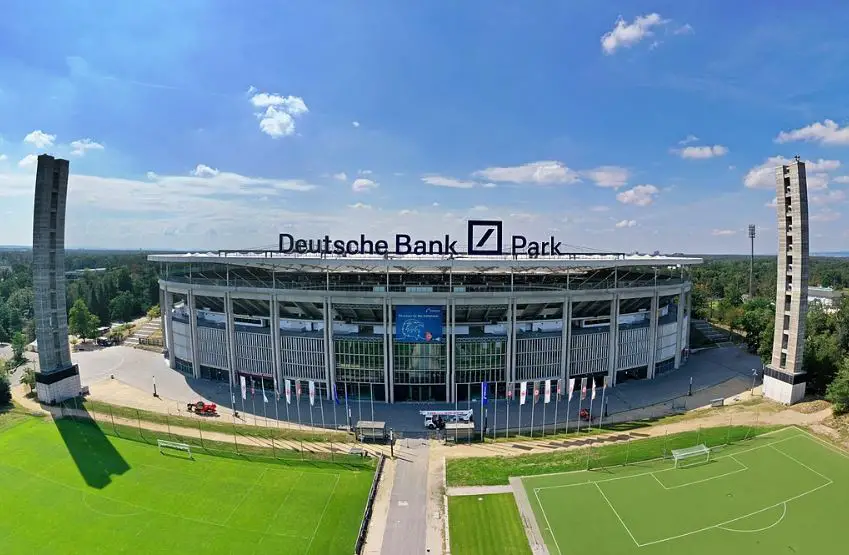
The most significant changes were made in the early 21st century when it was transformed into a football-only stadium by removing the athletics tracks.
These changes were made in preparation for the 2005 FIFA Confederations Cup and 2006 FIFA World Cup for which the stadium was a major venue.
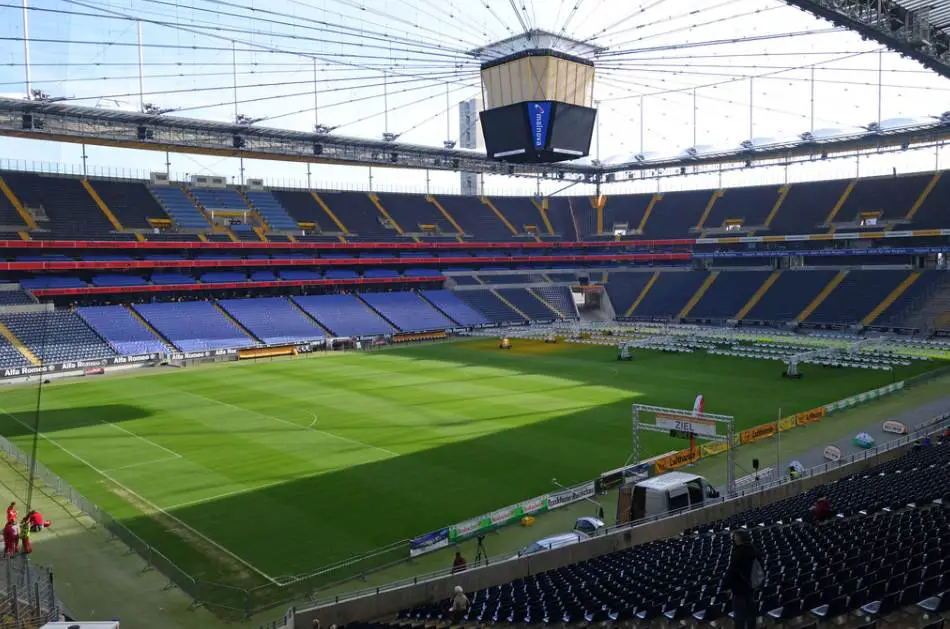
6. Mercedes-Benz Arena
- Location: Stuttgart
- Capacity: 54,244
The Mercedes-Benz Arena is the huge home stadium of the German football club VfB Stuttgart, the pride of the largest city in the German state of Baden-Württemberg.
The original version of the stadium was completed in 1933 and was referred to as the “Neckarstadion” until 1993, a reference to the nearby Neckar River.
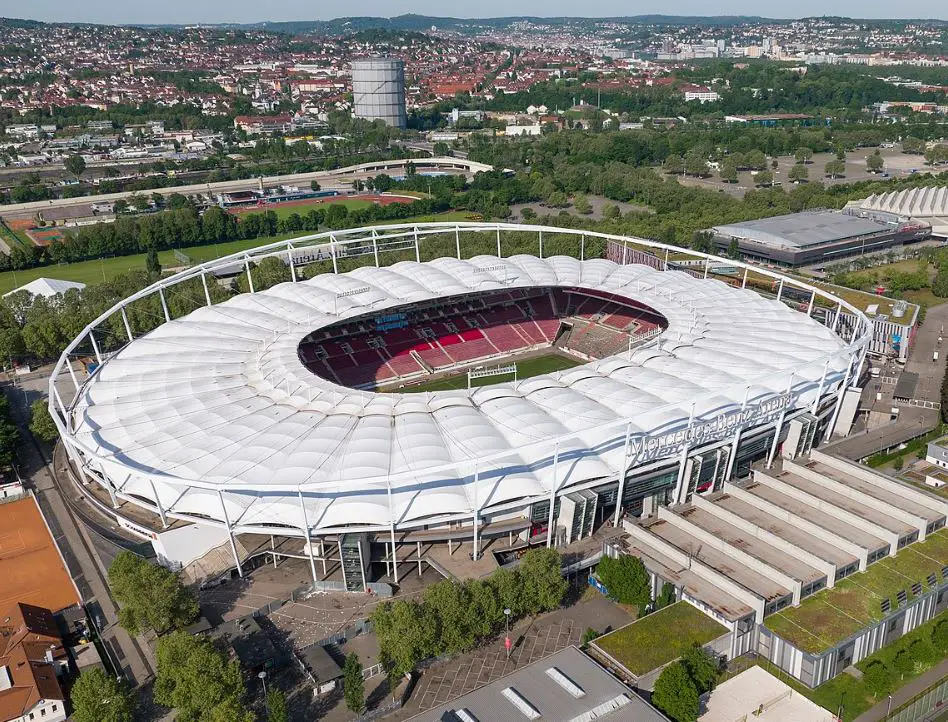
It’s another one of the UEFA EURO 2024 stadiums that was renovated several times throughout its history, including a €58 million project between 2004 and 2005.
The stadium reached its current capacity of 54,244 seats during a €63.5 million expansion phase that was completed between 2009 and 2011.
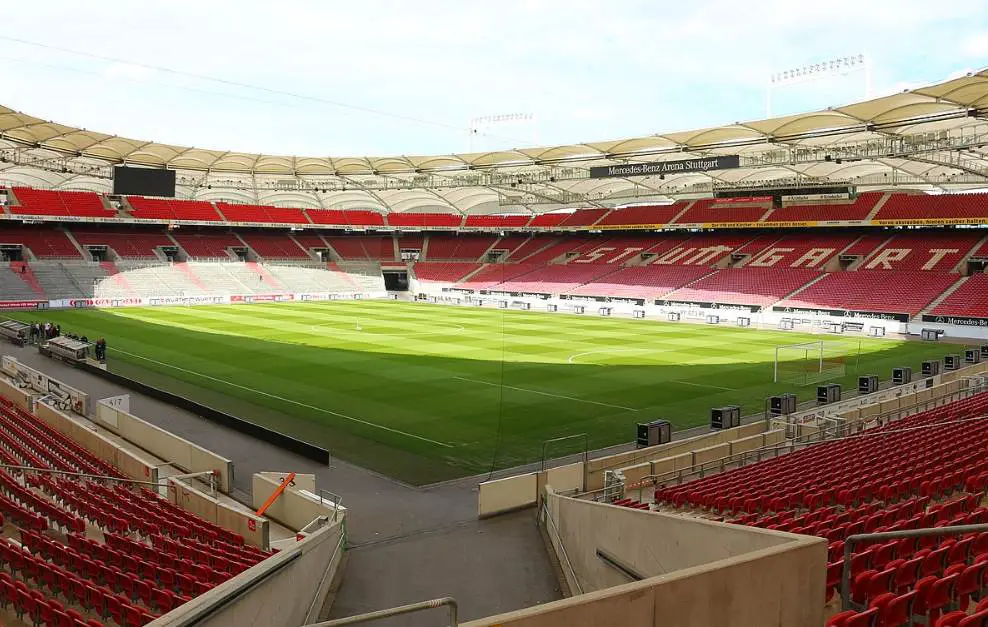
7. Volksparkstadion
- Location: Hamburg
- Capacity: 52,245
The Volksparkstadion is located in the second-largest city in Germany and is the amazing home of the German football club Hamburger SV.
The stadium was constructed between 1951 and 1953 by its rivals FC Altona 93 and the most popular club in the city only moved here in 1963.
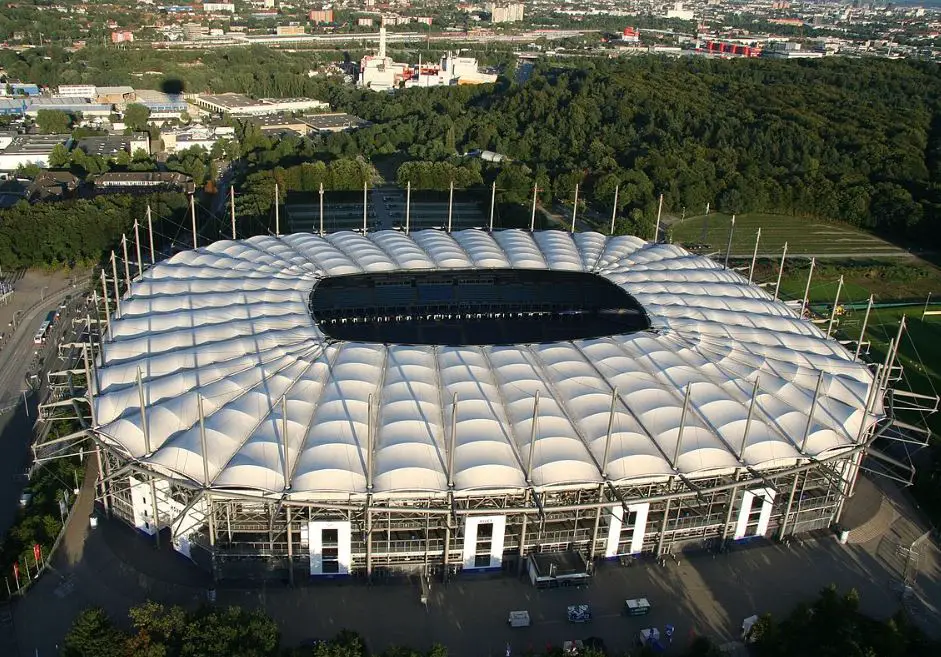
The exterior of the stadium looks pretty amazing and the same can be said about the interior which features 3 tiers of very steep stands.
The stadium got its current appearance in 1998 when between 90 and 100 million euros was spent to transform the arena into a modern football temple.
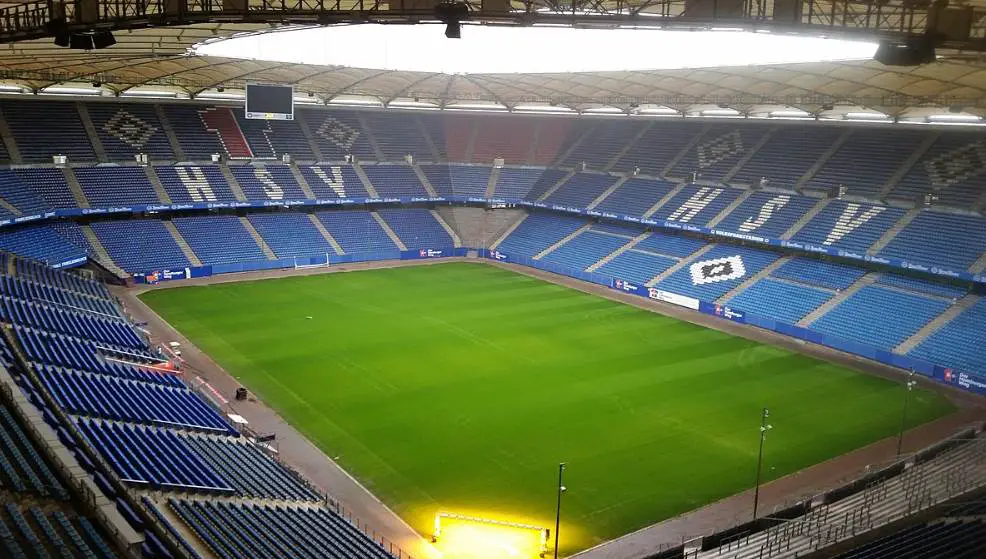
8. Merkur Spiel-Arena
- Location: Düsseldorf
- Capacity: 51,031
The Merkur Spiel-Arena is the current name of a stadium in Düsseldorf that also went by the names of Esprit Arena, the LTU Arena, and the Düsseldorf Arena.
The exterior of the stadium doesn’t really look like a sports venue. You might as well think that you’re approaching a large store or a factory.
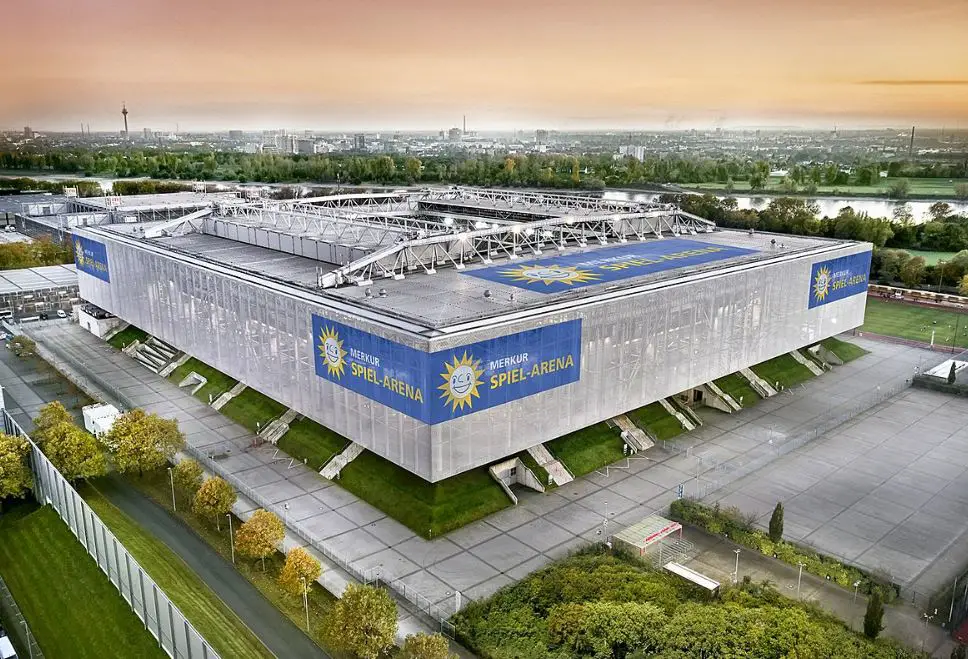
It is, however, the amazing home venue of the German football club Fortuna Düsseldorf and has been since it was completed between 2002 and 2004.
It was quite an expensive stadium to build with a total price tag of €240 million. The capacity of the stadium during league games is 54,600 as it includes 9,917 standing terraces.
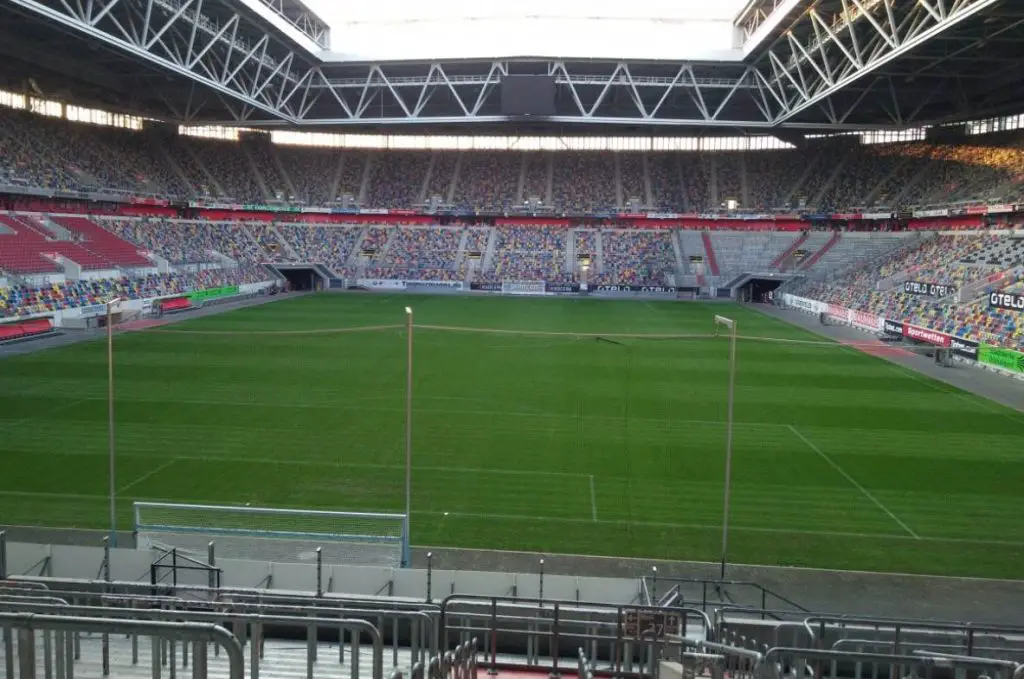
9. RheinEnergieStadion
- Location: Cologne
- Capacity: 49,827
The RheinEnergieStadion was formerly known as the Müngersdorfer Stadion and is the home of the German football club 1. FC Köln, another popular club in Germany.
There have been two former stadiums located in this area, one dating back to the early 1920s. The current stadium was constructed between 2002 and 2004.
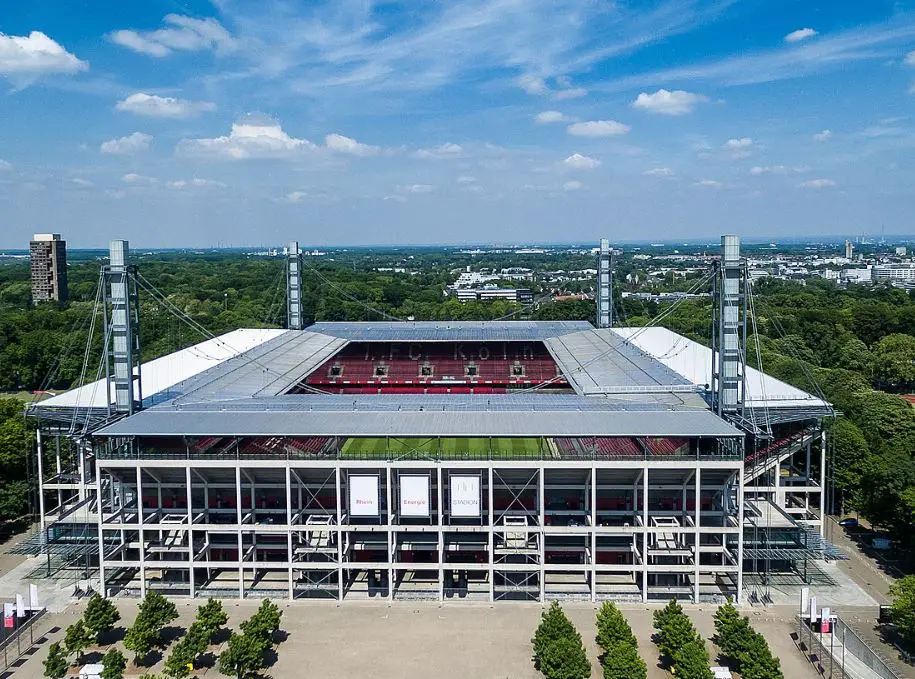
The renovation of the old stadium was completed in 2004 and cost €117.4 million. This transformed the outdated stadium into a modern football stadium.
This renovation allowed the RheinEnergieStadion to be one of the venues of the 2006 FIFA World Cup and it hosted 5 games during this tournament.
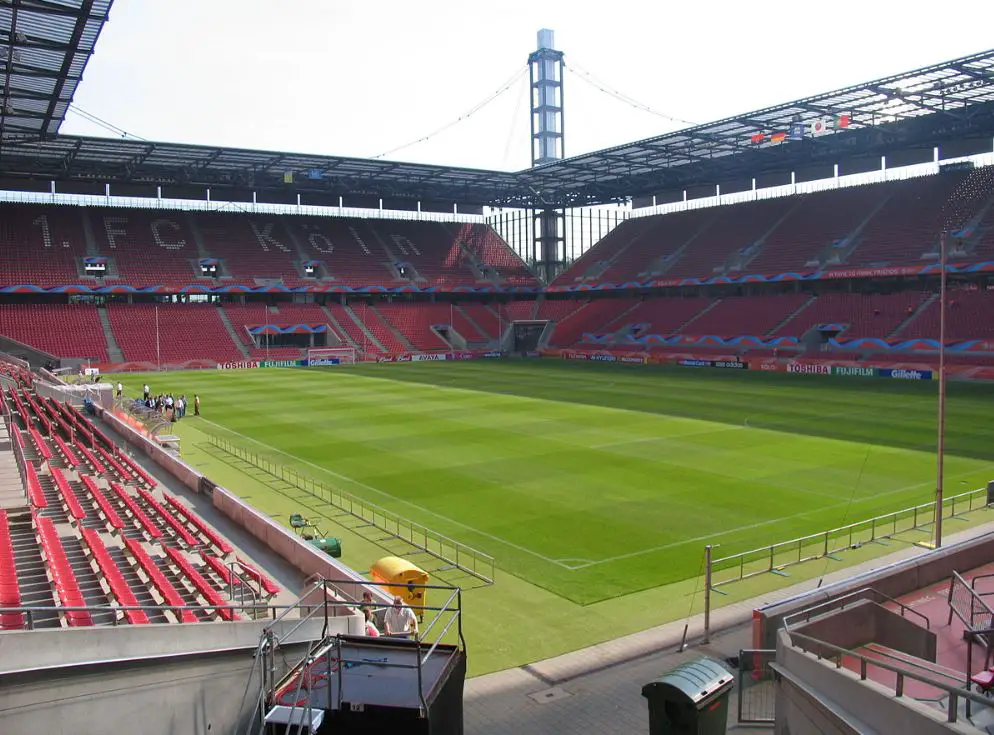
10. Red Bull Arena
- Location: Leipzig
- Capacity: 42,959
The Red Bull Arena is the smallest of the 10 UEFA EURO 2024 Stadiums but this doesn’t mean that it’s the least impressive one.
It’s the largest stadium in former East Germany and can hold 47,069 spectators during league matches of its main tenant RB Leipzig.
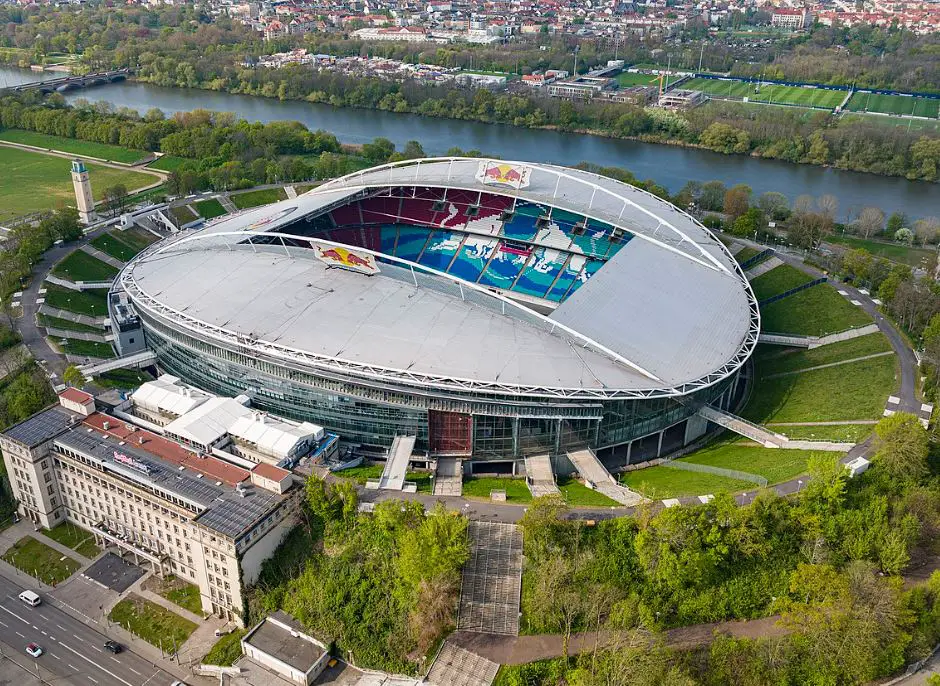
The stadium was constructed between 2000 and 2004 for a price of €116 million and was expanded and renovated once in 2015.
It replaced the former Zentralstadion which was once the largest football stadium in Europe with a capacity of approximately 100,000 spectators.
